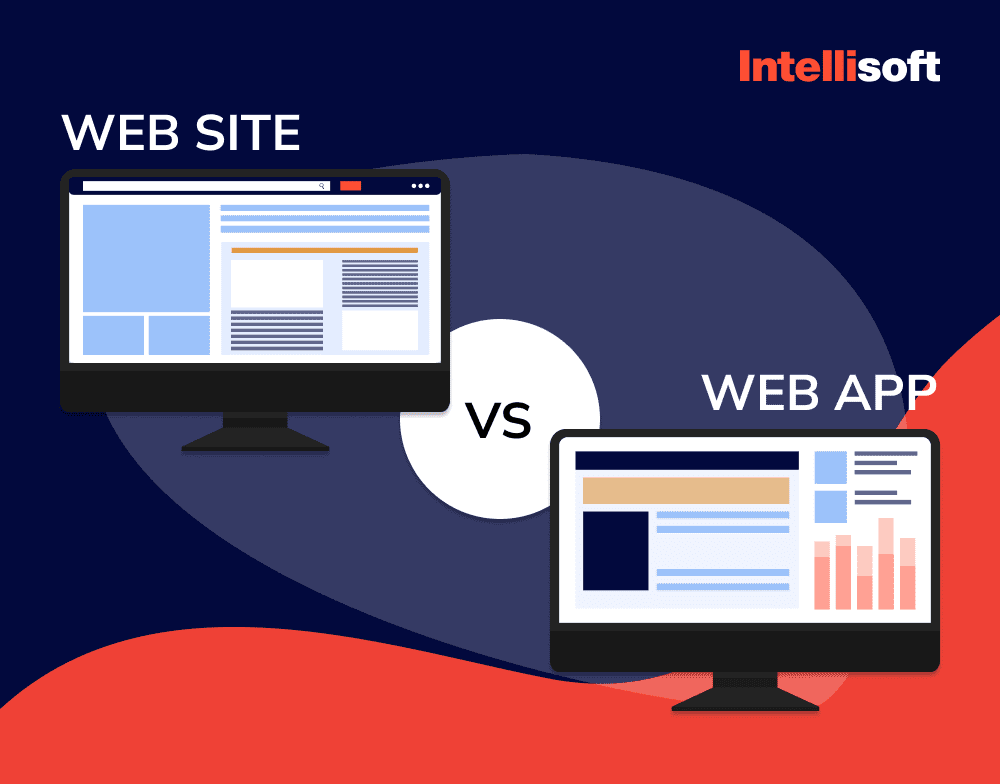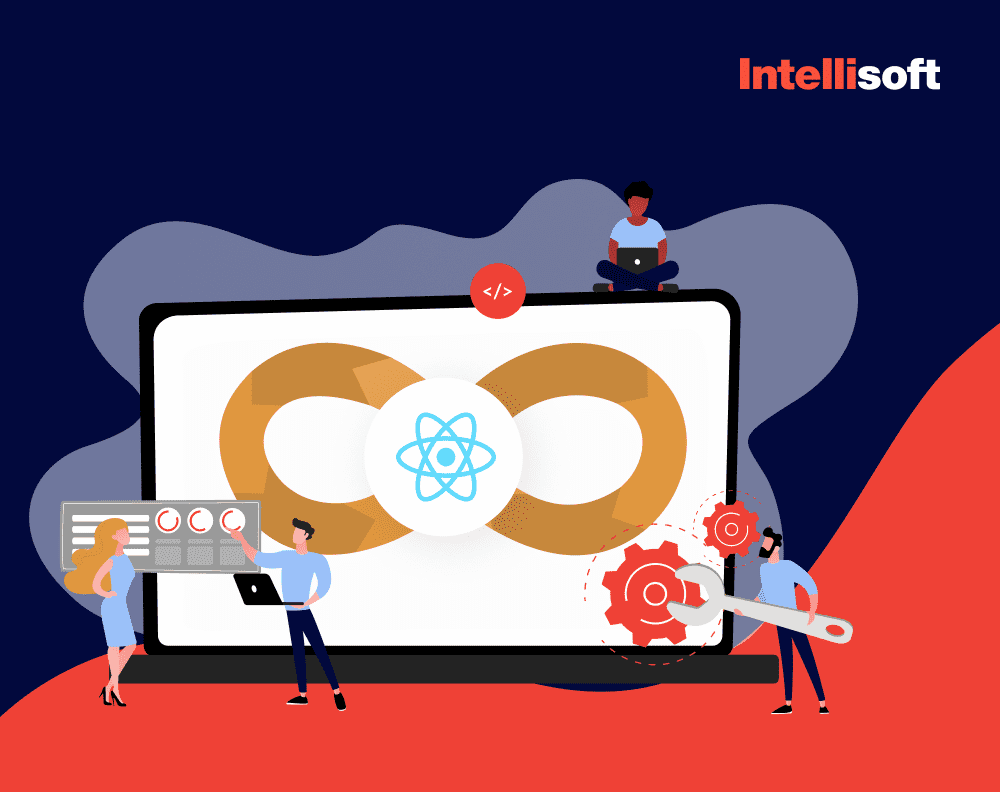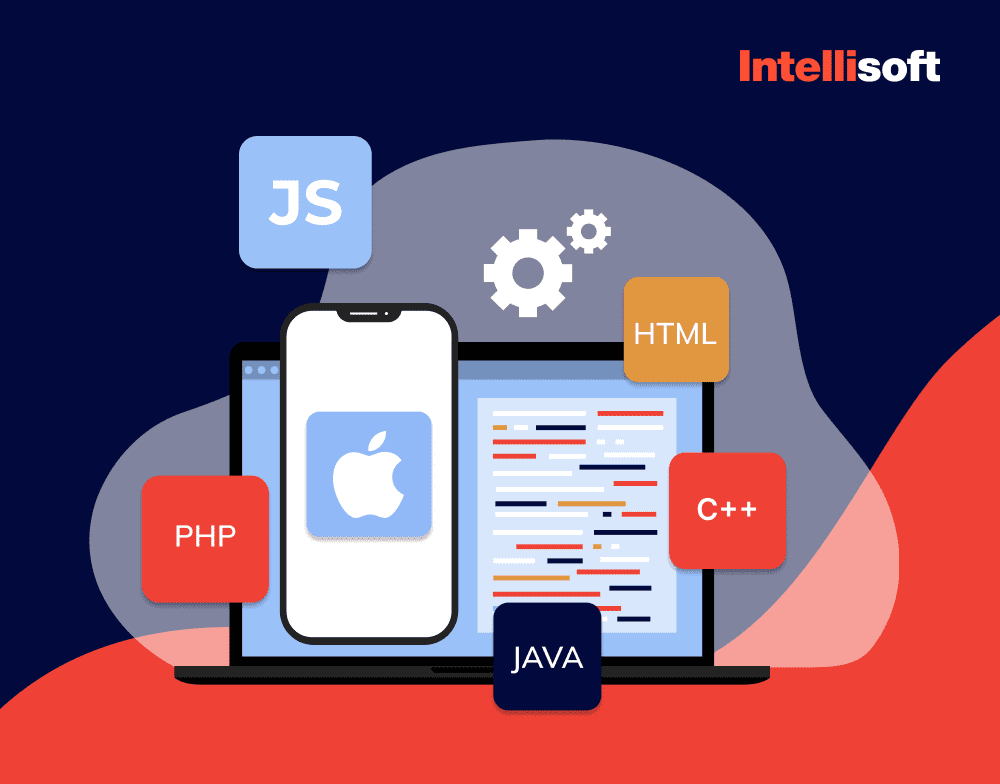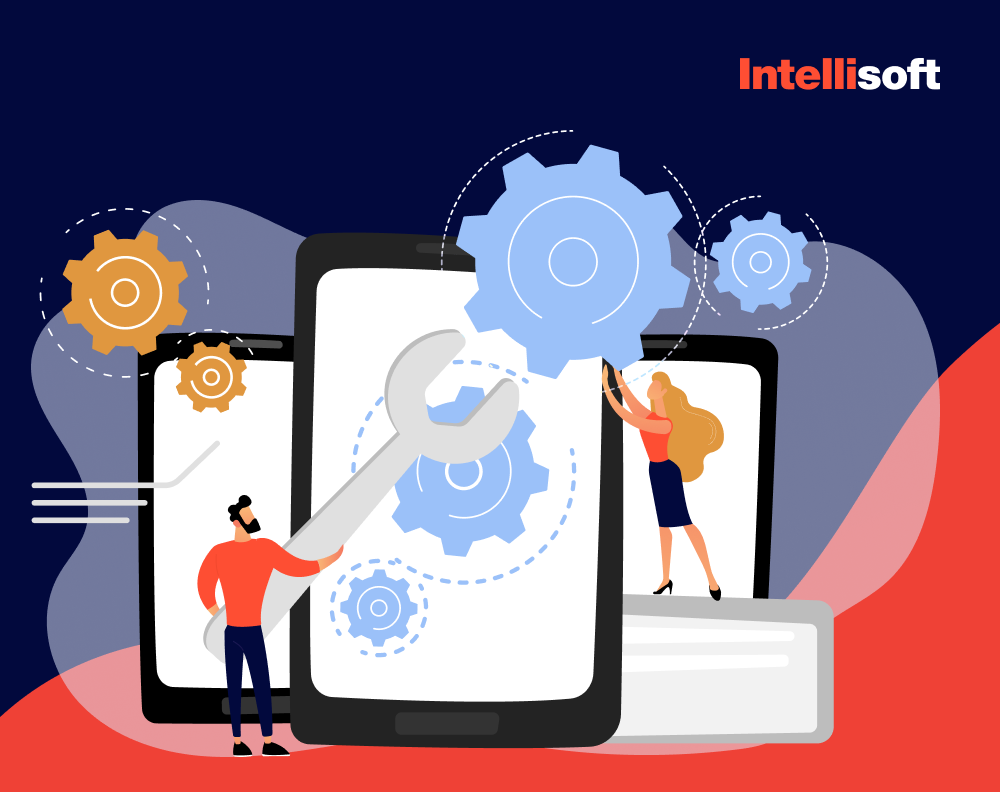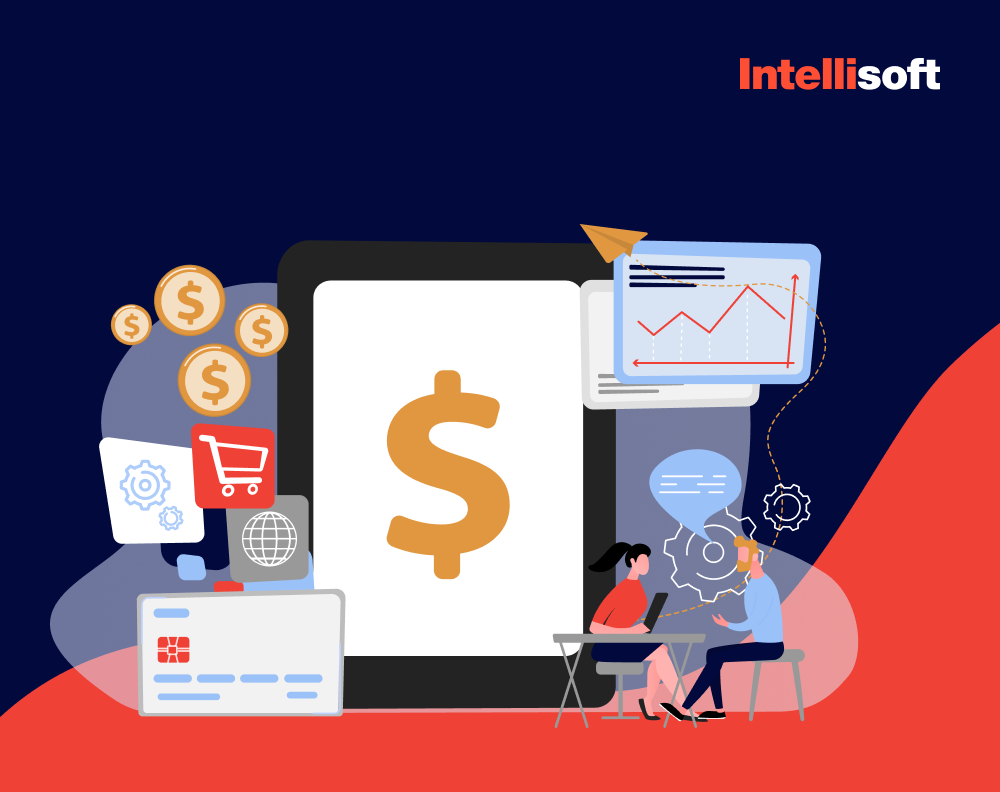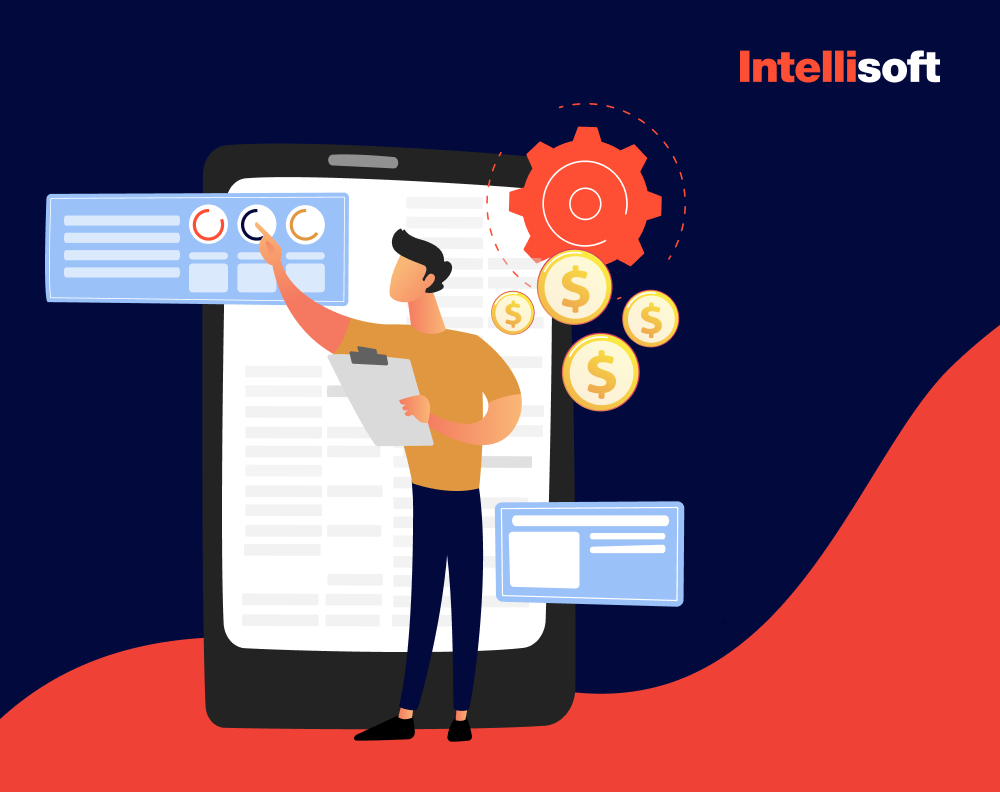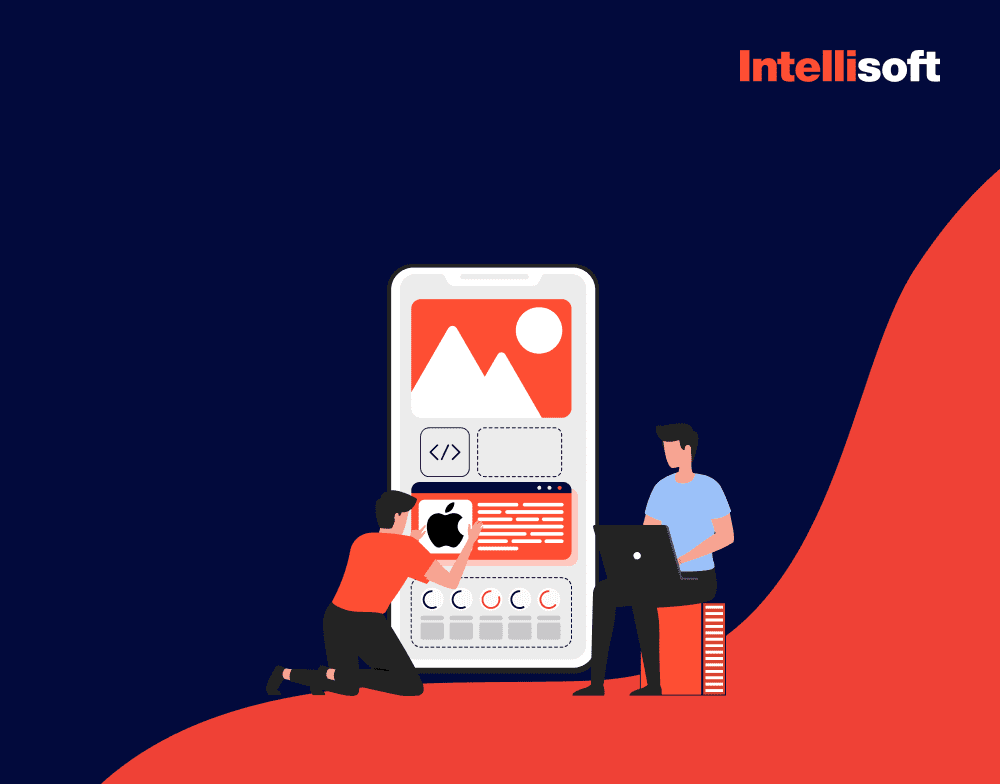Today, mobile applications are no longer a technological novelty. In our fast-paced world, they have become pivotal tools that foster stronger customer relationships through personalized experiences and insightful analytics. At IntelliSoft, we understand the gravity of this digital transformation. With businesses eager to harness the power of mobile apps, a pressing question arises: “How much does it cost to build an app?”
While a Clutch survey sets the starting point at $5,000 to $10,000, this range barely scratches the surface, covering only the initial discovery phase. As GoodFirms’ research indicates, costs can soar anywhere from $40,000 for basic applications to $100,000 for those that are more sophisticated. The truth is that the average cost of app development is a complex equation with many variables.
In this article, we’ll dive deep into these variables, leveraging our expertise in software development to guide you through the intricate web of app development costs.
At IntelliSoft, our focus goes beyond just discussing technology. We bring it to life, creating solutions that truly connect with your audience. We understand that people spend a lot of their time on their mobile devices, and that’s where our expertise comes in. We tailor our technology solutions to fit perfectly into the everyday mobile experience of your audience.
Table of Contents
App Development Cost Analysis Before You Start Your Project
In the dynamic app development world, understanding the potential costs involved is a strategic necessity. Let’s talk about the reasons.
Realistic Budget Estimates
The financial aspect of app development is a big balancing act. It’s crucial to have a precise financial plan. A staggering 66% of projects, as highlighted in a Wellingtone survey, face cost overruns. This statistic underscores the importance of having an accurate budget. A well-defined budget acts as a safety net, ensuring your project doesn’t fall into the trap of unanticipated expenses.
Scoping Decisions
When it comes to app development, knowing where to draw the line between necessity and luxury can make or break your project. PMI data reveals that a significant 33% of IT project overruns are attributable to changes in requirements. This insight is a stark reminder of the importance of early decision-making in correctly scoping your project – distinguishing the must-haves from the nice-to-haves.
Roadmap for Stakeholders
A clear and well-communicated financial roadmap is essential in aligning and managing stakeholder expectations. According to a PMI survey conducted in 2021, 30% of European project failures were rooted in poorly defined project goals and a misalignment in stakeholder expectations. Keeping sponsors and stakeholders in the loop with a transparent budget plan helps avoid surprises and ensures a unified vision.
Vendor Selection
Your budget serves as a compass in the vast ocean of the global software outsourcing market, which is expected to reach a colossal $777.80 billion by 2028. Knowing your financial limits aids in selecting the most suitable development partner from many available options, each with varying cost structures and expertise levels.
Understanding the basic elements of app development costs is crucial, especially for startups. This knowledge becomes your protective measure. It helps avoid common traps such as not having enough funds, poor planning, and mismatched ideas about the project’s goals. These pitfalls can derail a startup’s journey, so it is essential to have a clear grasp of the financial aspects from the beginning.
The Influence of Project Management on Mobile App Development Cost
When navigating the complexities of app development costs, one aspect that is often overlooked is the crucial role that project management plays. The cost of app development is intricately tied to a triad of constraints known as the project management triangle, encompassing time, finance, and project scope.
Understanding the Project Management Triangle
At the heart of this model are three constraints:
- Time Constraints refer to the timeline for completing the project. A shorter timeline can accelerate delivery but often requires more resources.
- Cost Constraints are tied to the budget allocated for the project. Keeping costs low is essential, but it shouldn’t come at the expense of quality or scope.
- Scope Constraint involves the deliverables or the project’s results. A larger scope generally means more time and a higher budget.
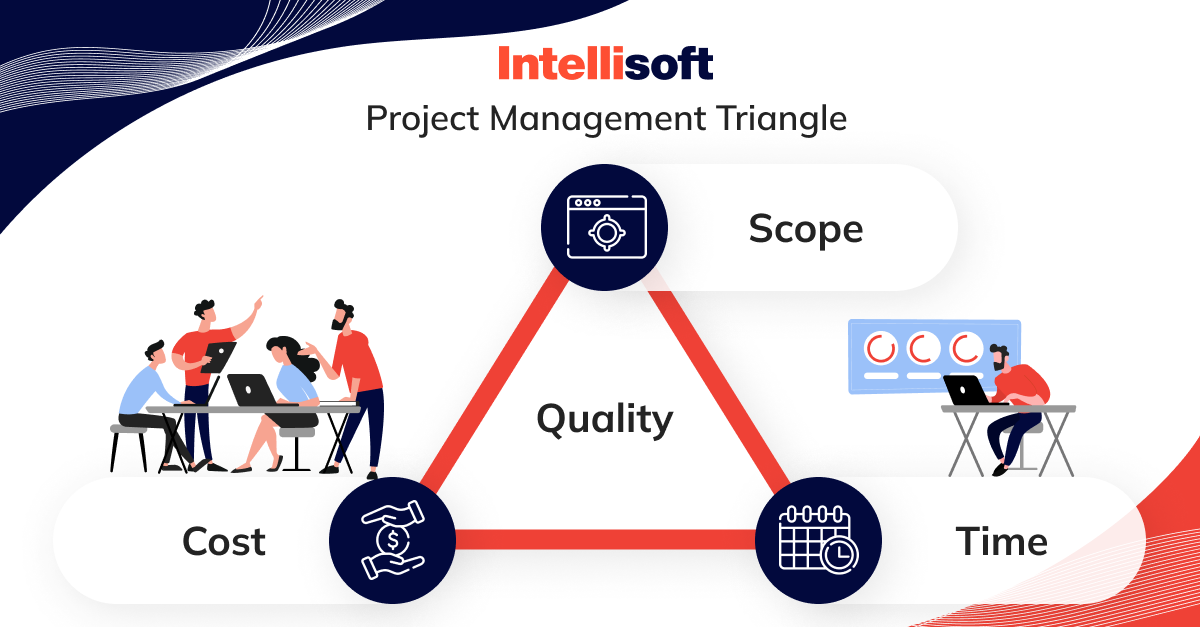
These constraints are often at odds with each other, creating a balancing act for project managers:
Expanding Scope
When the scope increases, it typically leads to more time needed and higher costs. More features mean more work, which requires more time and money.
Tight Timeframes
A constrained timeline might necessitate additional resources to meet deadlines, which can inflate costs and potentially reduce the scope to meet the timeline.
Budget Limitations
A strict budget might mean longer timelines and a scaled-down scope. Reducing costs often involves compromising on the scale or the speed of development.
Human Resources as a Factor
Another dimension to consider is the human resource aspect. Throwing more people at a project to expedite it can increase costs. However, this approach can be justified if accelerating the process reduces costs elsewhere in the project, balancing the overall expenditure.
The Trade-offs
Developers can indeed complete a project faster if the budget is increased or the scope is reduced. Conversely, expanding the scope necessitates more funds and more time. This interplay is crucial. Adjusting one triangle element without considering the others can lead to compromised quality. It’s a delicate balance, perfectly encapsulated in the adage, “Good, fast, cheap. Choose two.”
Understanding and controlling the limits of your project is key in figuring out the average cost of app development. It’s more than just deciding on a budget. It’s about smartly managing three things: time, money, and what your app will do. You need to find a balance between these to make sure your project succeeds without giving up on its quality. It’s especially crucial for startups, as they usually have fewer resources.
What Does Mobile App Development Cost Consist of?
To figure out how much does mobile app development cost, you need to analyze each stage of the process that contributes to the overall cost. Understanding these components means you can manage and optimize your budget more effectively. Let’s break down the main cost elements:
Business Analysis Cost
The foundation of any app development process begins with a thorough business analysis. This stage emphasizes market analysis and meticulous requirement documentation. Allocating about 10% of your total budget to this phase is advisable, with costs generally ranging from $1,200 to $11,000. To reduce costs, consider leveraging insights from existing apps and providing detailed Unified Modeling Language (UML) diagrams to streamline the analysis process.
Design and Clickable Prototype
A critical component of price of app development is the user interface (UI) design, culminating in a clickable prototype. This phase typically accounts for 10-15% of the total budget, with estimated costs between $2,500 and $10,000. Using stock UI elements and free UI kits can be a smart move for budget efficiency. These resources can significantly reduce design costs while maintaining a professional look and feel.
Coding
Coding is often the most expensive phase in app development, with costs ranging dramatically from $2,000 to as much as $60,000. Tech selection is crucial. For simpler applications, cross-platform development frameworks can be a cost-effective solution. Selecting your development team wisely is crucial, as their expertise will directly impact both quality and efficiency. Utilizing off-the-shelf mobile SDKs and focusing on building a Minimum Viable Product (MVP) can also help test ideas without a hefty investment.
Project Management
While sometimes underestimated, project management is a vital aspect that typically consumes 10-15% of your budget. The cost for effective project management ranges from $1,200 to $12,000. Investing in a skilled project manager is crucial to keep your project on track, both in terms of time and finances.
Estimated Total
Bringing all these components together, the estimated app development cost can vary from $7,000 to $95,000. Your app’s size, complexity, and specific requirements will dictate the final figure. Managing each aspect of the development process enables informed decisions aligned with budget and project goals.
Related readings:
- From Idea to Prototype: Build a Mobile App from Scratch
- Main Trends in the Development of Mobile Applications
- How to Make a Cross-Platform App That Thrives: A Step-by-Step Guide
- Steps to Develop a Successful Mobile App for Android
- Web Development vs Mobile Development: What to Choose?
Factors That Impact Your Mobile App Development Cost
There are various factors that can affect the cost of developing a mobile app. You need to understand them to budget your project effectively and ensure you get the best return on your investment. Let’s explore the top elements that affect the overall cost of app development.

Complexity
The complexity of an app is a primary factor in determining its development cost. A basic app with MVP functionality and a simple UI can cost between $5,000 and $50,000, taking 2-3 months to develop. Medium complex apps featuring more sophisticated functionalities such as social media integrations and payment gateways range from $50,000 to $120,000. Highly complex applications incorporating advanced technologies like AR/VR or AI can skyrocket to $100,000 – $300,000 and above, depending on the intricacy of features and tech stack used.
Features and Functionalities
The features and functionalities integrated into your app significantly impact the development cost. Basic features like user login and profile completion might cost between $500 to $1,000. At the same time, more advanced functionalities like payment integrations and video calls can increase the cost to several thousands of dollars. Prioritizing core features and developing an MVP can save time and money while gathering user feedback.
Category
The app’s category also influences the development cost due to varying user numbers, functionalities, and security requirements. For example, e-commerce apps like Amazon or social networking applications such as Facebook typically require robust features and scalability to handle millions of users, significantly increasing the development cost.
Design & Animation
App design and animation can account for a significant portion of the budget. Custom UI designs are more expensive to implement than standard UIs. The cost of designing an app, including wireframing and animation, can range from a few hundred to thousands of dollars, depending on the app’s complexity and customization.
Platform
The choice of platform (iOS, Android, web, cross-platform, or hybrid) greatly affects development costs. Native app development for each platform tends to be more expensive than cross-platform or web app development. The cost varies depending on whether you choose a single platform or opt for a cross-platform approach that caters to both iOS and Android.
Maintenance
Post-development, app maintenance becomes a recurring cost. This cost factor includes bug fixes, design updates, and adapting to new devices and OS versions. Typically, app maintenance costs are estimated at around 20% of the total development cost annually.
Code Reuse
Reusing code from existing apps can significantly reduce development costs. However, balancing code reuse with the need to maintain a unique brand identity and functionality specific to your app is important.
Development Team Location
The location of your development team is a crucial factor affecting the cost. Development rates vary greatly across different regions, with countries like Ukraine offering more affordable rates compared to the United States or Australia. The choice between hiring a local team, an in-house team, freelance developers, or a professional app development company also impacts the budget.
The cost of app development is far from a one-size-fits-all figure. There are many factors that influence the bottom line, and you need to balance them effectively to achieve the desired effect. The key to a cost-effective app development process is meticulous planning, clearly understanding your app’s requirements, and choosing the right development partner.
App Development Cost Breakdown
To set realistic expectations for your project’s budget, you need to understand the varying costs associated with different levels of app development. From simple brochure-like applications to complex, feature-rich applications, the development journey can vary significantly in terms of cost, time, and resources. Let’s break down these categories to get a clearer picture.
Simple App Development Cost
Simple apps are equivalent to digital brochures. They are straightforward in functionality and design, often leveraging standard template-based UIs. Examples include basic map or GPS tracker applications. Key characteristics of simple apps include:
- They typically don’t require API integration with third-party services.
- These applications require no back-end development. They are mostly front-end with minimal or no server-side interactions.
- Using standard, basic UI elements helps keep the design simple and cost-effective.
- Simple features such as email subscriptions, social login, and basic calendars are common.
- On average, developing a simple app can take upwards of 400 hours.
The cost for simple apps is generally on the lower end of the spectrum due to their straightforward requirements and minimal complexity.
Medium App Development Cost
Moderate complexity applications offer more elaborate functionality and design. This category is broad, encompassing most apps on the App Store or Google Play, such as social networking, fitness, or photo editing. Characteristics include:
- Unlike simple applications, these require custom UI/UX features and more tailored user interface and experience designs.
- A built-in payment gateway allows for in-app purchases or other transactions.
- API integration allows for connecting to third-party services for enhanced functionality.
- These apps involve back-end server development to manage app data and user interactions.
- The development of such applications can range from 500 to 800+ hours.
The cost for average-complexity apps is higher due to their custom UI/UX design, back-end development, and additional features.
Complex App Development Cost
Complex applications represent the pinnacle of custom app development, packed with advanced features, cutting-edge technology, and intricate UI/UX designs. They often incorporate technologies developed from scratch and offer extensive customization. Features typically include:
- Multi-language support, catering to a diverse, global user base.
- Extensive 3rd-party integrations with external services and APIs.
- Advanced graphical elements like custom animation for a more engaging user experience.
- Complicated back-end with robust server-side logic to handle complex operations.
- Highly tailored custom UI/UX design for unique user experience.
- Real-time features, such as database integration for dynamic content updates and interactions.
- These apps can take 800 to 1500+ hours to develop.
The development cost for complex applications is considerably higher due to their advanced features, technologies, and the extensive time required for development. This category includes apps with new, innovative technologies that push the boundaries of what’s possible in the mobile space.
The average cost of app development varies depending on its complexity, design, and features. Each category, from simple to complex, has unique requirements and associated costs. That’s why it’s crucial to have a clear project definition and undergo meticulous planning at the beginning of any app development project.
Feature-based App Development Cost
The app development cost is heavily influenced by the specific features you choose to integrate. Each feature adds a layer of complexity and functionality to the app, impacting the overall development time and cost. Here’s a breakdown of some common features and their associated development costs:
User Registration
User registration is a crucial functionality that enables individuals to create a personalized account on a website or application. This process involves providing necessary details such as email addresses or social media credentials to establish a unique identity. This feature is crucial for personalizing the user experience and securing user data.
- Development Time: Approximately 20 hours
- Cost: $800 – $1,000
Payment Gateways
Integrating payment gateways is essential for applications that involve transactions. It enables users to securely pay for purchases using credit or debit cards.
- Development Time: Around 50 hours
- Cost: $2,000 – $2,600
Search Engine
A built-in search engine with filters allows users to easily find specific sections or content within the app, enhancing user experience.
- Development Time: About 10 hours
- Cost: $500 – $600
Chat
A chat feature facilitates interaction between users and service providers. It can include functionalities such as sending messages and images and receiving push notifications.
- Development Time: Roughly 80 hours
- Cost: $2,500 – $3,200
Geolocation
Geolocation is crucial for apps requiring tracking, such as those for fleet management or package delivery services.
- Development Time: About 50 hours
- Cost: $1,500 – $2,000
Google Maps Integration
Integrating Google Maps makes tracking visual and assists users in discovering new service providers in their vicinity.
- Development Time: Approximately 20 hours
- Cost: $1,300 – $1,600
Offline Mode
The offline mode feature in mobile applications enables users to access the app’s content even when they don’t have an internet connection. This feature is especially useful for content-based applications that provide users with access to media files, documents, or other types of content, regardless of network availability.
- Development Time: Around 40 hours
- Cost: $3,500
Video/Audio Streaming
Providing video or audio streaming is increasingly popular, especially for entertainment or educational apps.
- Development Time: Roughly 30 hours
- Cost: $2,300 – $3,000
Each feature contributes to the app’s functionality and user experience. Integrating them requires careful planning and budgeting. Development cost increases with complexity and number of features. However, selecting the right features can significantly enhance the app’s value to users, making it a worthwhile investment.
Popular Apps Development Costs
The app market is filled with remarkable success stories that have transformed customer experiences. Let’s explore the development costs of some popular applications that have redefined their respective domains.
Uber
Uber, the renowned ride-sharing app, seamlessly connects drivers with riders globally. It allows customers to request instant or scheduled rides matched with nearby drivers. The average cost to develop an app like Uber usually ranges between $30,000 and $100,000. This cost is attributed to its complex geolocation features, payment integration, and real-time operation capabilities.
Snapchat
Snapchat, a trailblazer in the social media domain with over 300 million daily active users, introduced augmented reality to the masses through its engaging filters and lenses. Known for its multimedia messages that self-destruct, the development cost for a Snapchat-like app is estimated to be around $45,000 to $100,000 for a single platform. It can reach up to $200,000, which includes both iOS app development cost and the cost of Android app development.
As a ubiquitous instant messaging app, WhatsApp allows users to exchange messages, make video/audio calls, and share photos and videos. The cost to develop a messaging app like WhatsApp is projected to be between $30,000 and $70,000, considering its requirement for reliable real-time messaging, voice and video communication, and media sharing functionalities.
TikTok
TikTok has revolutionized the entertainment industry with its short-form video-sharing platform. Users can easily create, edit, and share videos with various filters and effects, including lip-syncing. The average development cost for an app like TikTok ranges from $60,000 to $100,000 for a single platform, with hybrid development costs potentially reaching $150,000.
Coursera
Coursera, the prominent e-learning platform, offers a wide array of online courses, skill development programs, and university degrees. Its popularity stems from its extensive course offerings and user-friendly interface. Developing a Coursera-like app might cost between $60,000 and $120,000, reflecting the complexity of integrating various educational content and interactive features.
Netflix
Netflix, the leading name in media streaming, allows users to stream a wide variety of shows and movies on demand. An app like Netflix, with its vast content library and streaming capabilities, has an average development cost ranging from $25,000 to $200,000. This cost includes features such as content streaming, user personalization, and robust back-end infrastructure to manage extensive data.
Each of these apps exemplifies how investing in quality app development can lead to tremendous success in the app market. Their development costs reflect the complexity, feature set, and scalability required to offer a seamless and engaging user experience.
Hidden Costs of App Development
App development comes with a range of obvious costs, such as design, coding, and project management. However, there are several hidden costs that, if overlooked, can significantly impact your overall budget. For effective financial planning and ensuring your project doesn’t encounter unexpected financial hurdles, you need to know where to look. Let’s talk about some of these often overlooked aspects.
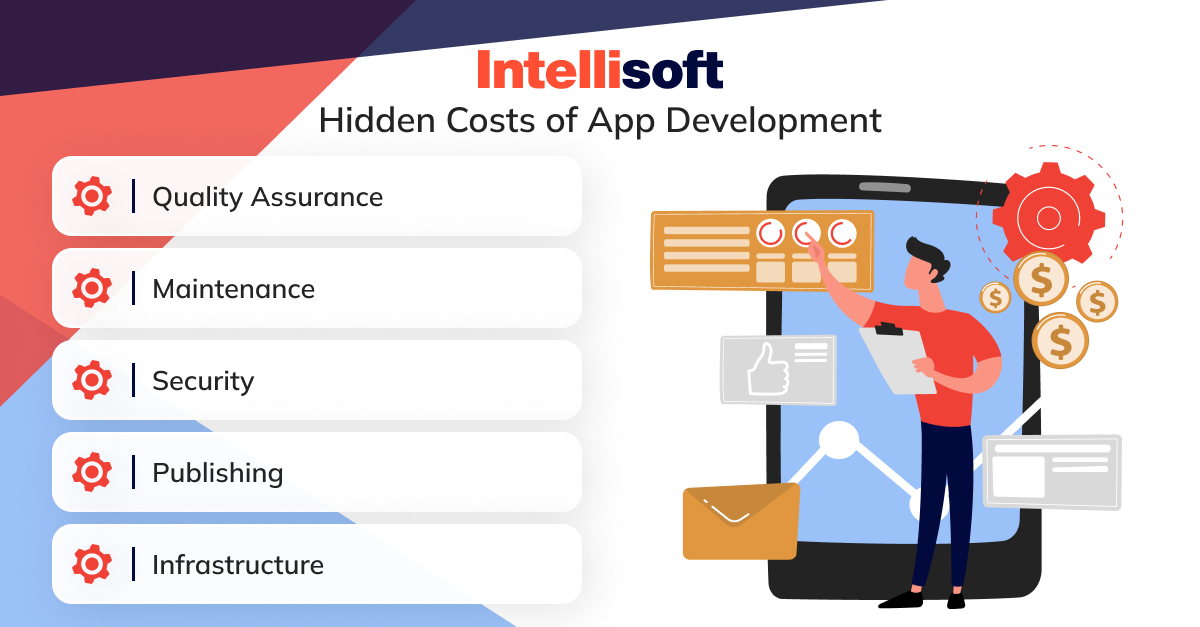
Quality Assurance
Quality assurance (QA) is a crucial part of app development that ensures your app works flawlessly across different devices and operating systems. It involves thorough testing for bugs, performance issues, and user experience improvements. The cost of QA can vary based on the complexity of the app, but it typically requires added investment in terms of time and resources. Skimping on QA can lead to a subpar product and poor user reviews, so it’s a critical investment for the success of your app.
Infrastructure
The infrastructure costs include server costs, data storage, and any other cloud services needed to support the app. These costs can vary based on the app’s requirements for data processing, storage needs, and the number of active users. While some of these costs are predictable, they can escalate as your app grows in popularity, so it’s essential to plan for scalability from the outset.
IT Support
Post-launch, your app will require ongoing IT support to manage updates, fix bugs, and ensure it continues to run smoothly. To ensure that the application serves its purpose effectively over time, the team needs to carry out regular maintenance tasks. This will help keep the app up-to-date with the latest technological advancements, ensure its functionality remains intact, and prevent any potential issues from occurring that could disrupt its performance. IT support costs can be a recurring expense, and it’s wise to factor this into your long-term budget.
Publishing
Publishing your app on platforms like the Apple App Store or Google Play Store involves certain costs. While these fees may not be substantial (like the annual fee of $99 for an Apple Developer account), they are recurring and essential for keeping your app available to users. Additionally, the cost of marketing and promoting your app to stand out in a busy marketplace can also be significant.
Security
In an era where data breaches are increasingly common, investing in robust security measures is non-negotiable. These measures include securing user data, implementing secure payment gateways, and regularly updating the app to protect against new vulnerabilities. The safety and privacy of our app users are of utmost importance. To maintain their trust and meet data protection regulations, we must continuously invest in robust security measures.
Hidden costs in app development can add a significant amount to your overall budget. Planning for indirect expenses from the beginning can help manage your app’s budget, ensuring long-term success and sustainability.
4 Tips for Reducing App Development Costs
Creating a mobile application can be quite an expensive venture, as it involves a great deal of planning, designing, and programming. However, there are certain tactics that can be employed to effectively manage and minimize the expenses associated with the development process while still ensuring that the end product is of high quality and meets the desired standards. Here are some effective tips for keeping your app development budget in check:
Develop an MVP
Starting a project with developing a Minimum viable product (MVP) is a smart strategy to reduce initial costs. An MVP includes only the core essential features needed to launch the app and start gathering user feedback. This approach saves money on development and allows you to try out your application in the market with real users, providing valuable insights for future enhancements. Thanks to focusing on the MVP first, you can avoid spending on features that may not be necessary or desired by your target audience.
Select Outsourcing Vendor
Outsourcing your app development to a vendor can significantly reduce costs compared to in-house development, especially if you choose vendors from regions with lower labor costs, such as Ukraine. When choosing an outsourcing partner, it’s essential to review factors such as their track record, expertise, and communication skills, not just the price. A reliable and experienced vendor such as IntelliSoft can provide high-quality work at a fraction of the cost of developing the app domestically.
Use Time and Material Model
The Time and Material (T&M) pricing model can be more cost-effective than a fixed-price model, particularly for complex projects where the scope isn’t clearly defined from the start. In a T&M model, you pay for the actual time and resources used, which can lead to greater flexibility and cost savings, as you are not locked into a fixed price of app development for a predefined scope of work. This model allows for adjustments and changes along the way, ensuring you pay only for what you need.
Go Cross-Platform
Developing your app for multiple platforms (like iOS and Android) simultaneously using cross-platform technologies can reduce development time and costs. Tools like React Native or Flutter allow developers to deploy written code across multiple platforms, reducing the need for different development teams for each platform. This not only cuts down on price for app development but also ensures a faster time-to-market.
To effectively manage and reduce the bottom line of how much does app development cost, you can implement these strategies. These approaches help in balancing the budget without sacrificing the essential features and quality of the final product.
Worldwide Hourly Rates for App Development
As we mentioned before, the price for app development is significantly influenced by the location of your app development company. Different regions have varying market rates for mobile app development. You need to be aware of these rates for effective budget planning, especially if you’re considering outsourcing. In the table below, you can see a comprehensive overview of the average hourly rates for assessing iOS app development cost, the cost of Android app development, and Cross-Platform app development across various regions worldwide:
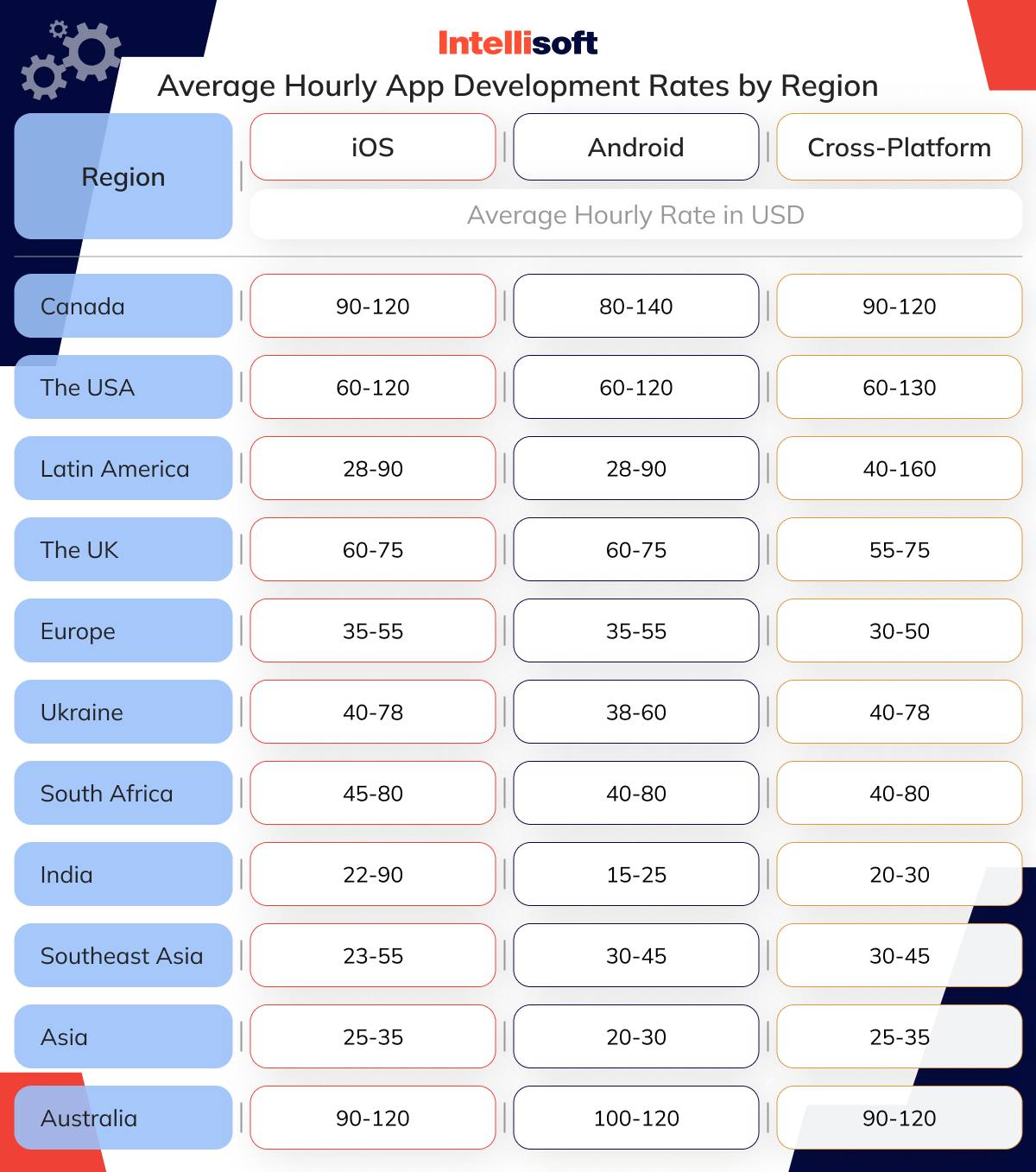
These rates highlight the significant regional variations in app development price. For instance, outsourcing to countries like Ukraine can be more cost-efficient compared to hiring developers in the USA or Australia. However, it’s important to consider factors like communication, time zone differences, and cultural nuances when collaborating with overseas teams. Choosing the right region for your app development needs can lead to substantial cost savings without compromising on quality.
Conclusion
To fully understand the complex landscape of app development costs, you need to take into account many factors that influence the cost. This understanding will allow you to find effective ways to reduce expenses. It’s a journey filled with critical decisions. The key takeaway is that while there is no one-size-fits-all answer to how much does it cost to build an app, informed planning and strategic decision-making can lead to a successful and cost-effective app development project.
At IntelliSoft, we understand these challenges and complexities. Our team is dedicated to guiding you through every step of the mobile app development process. With our expertise in developing high-quality, cost-effective applications tailored to your individual needs, we provide affordable pricing while maintaining top quality. Contact us today to discuss your project and discover how we can bring your mobile app aspirations to fruition.



